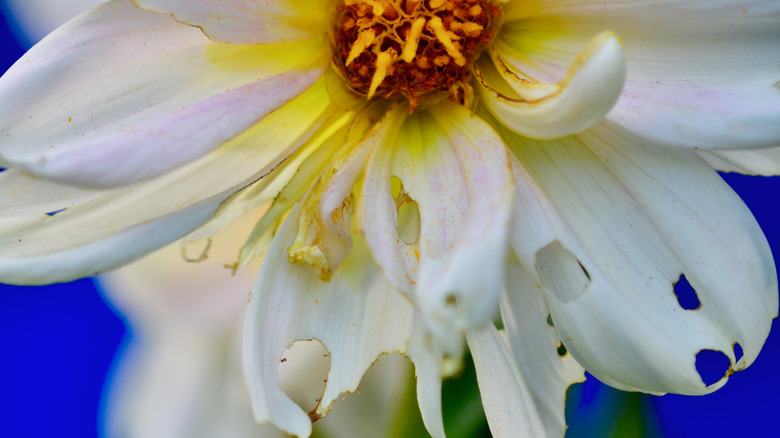Earwigs Aren't As Bad As You Think. Here's Why You Should Reconsider Killing Them
The sight of an earwig is often met with screams and disgust, and it's easy to see why. These bugs not only have the head of an ant and the body of a cockroach but also have giant, scary-looking pincers attached to their backsides. However, despite their terrifying appearance, earwigs aren't actually as bad as you might think. These insects don't really want to crawl inside your ears or burrow into your brain. Other than a few rare incidents, earwigs are completely innocent. The ear-burrowing idea is just a superstition that came from our European ancestors and is so long-enduring that it even influenced the insect's name.
In fact, although cast in an evil light by folklore, earwigs are actually the good guys and are quite beneficial for the ecosystem. These often-maligned bugs are even good for the garden and are one of those insects you shouldn't kill because (in normal circumstances) their benefits outweigh their disadvantages. So, when you find a creepy crawly earwig in your home, the best thing you can do is relocate it outside. This is especially true because these insects need a humid and moist environment and likely won't survive very long in the dry inside air.
Why you should keep earwigs in the garden, usually
Earwigs can help a garden in multiple ways and seeing a few in and around your vegetables or flowers is no cause for alarm. In fact, like other scavenger insects, earwigs are best known for eating dead plant material and insects, helping to clean up your yard and garden by removing debris. On top of this, earwigs can also eat the eggs and larvae of other pests and protect your garden from leaf-munching insects — like aphids. This is important because aphids, while sometimes too small to notice, can cause extensive damage to flowers and vegetables. If you aren't able to get rid of all your aphids with cinnamon, then letting your earwigs thrive is another effective anti-aphid option that also requires less hard work on your end.
However, the issue with earwigs is that if they don't have enough dead plant material or aphid larvae to munch on, they may turn their attention to your plants. Unfortunately, garden damage from earwigs tends to look a lot like the damage from other pests. So, how can you tell if the earwigs in your garden are friends or foe?
How to tell if your earwigs are a problem
Firstly, it is important to note that earwigs are unlikely to damage mature flowering plants and turf grass; however, if it's young seedlings, soft flowers (like petunias, marigolds, and dahlias), or fruits and vegetables that are suffering damage — then earwigs could be the culprit. If so, the best way to find out for sure is to look at your plants under a flashlight at night. If you find that your plants are covered in munching earwigs in the evening, then they are no longer beneficial for your garden and it's time to get rid of them.
Earwigs are drawn to moist soil, so a good way to kick them out is to remove anything around your yard that could cause moisture buildup or act as a good hiding place — like dead leaves, twigs, and mulch. You can also try planting strong-scented insect-repelling herbs around affected plants to deter the earwigs with their scent. Another option is to take the route recommended by one Redditor and draw more earwig predators — like lizards — to your yard by building a rock wall or outcropping for them. If all else fails, there are commercial pesticides that are approved for use against earwigs and can be sprinkled around affected plants to help reduce the population back to a beneficial level.


